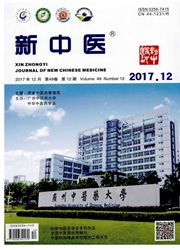

 中文摘要:
中文摘要:
Cyr61/CCN1(cysteine-rich 61)是近年来国内外生物医学领域研究的热点之一。Cyr61通过αvβ3/αvβ5诱导形成p130Cas/CrkII信号复合物,使得FAK磷酸化,进一步激活Rac1信号通路,促进中性粒细胞的胞葬作用,从而降低创面炎症反应,加速愈合。修复期则与整合素α6β1相结合诱导成纤维细胞衰老或激活p16 INK4a/pRb信号通路进一步令抗纤维化因子表达,从而抑制创面纤维化的发生。其在愈创炎症期和组织修复期都扮演重要角色,潜在治疗价值在于加速创面炎症阶段并抑制修复阶段的纤维化,减少瘢痕组织生成。更深入地了解Cyr61与皮肤创面愈合之间的作用关系对研制安全有效的临床治疗方案与药物具有重要意义。
 英文摘要:
英文摘要:
Cyr61/CCN1 (cysteine-rich 61) is one of the focuses of biomedical research at home and abroad in recent years. Cyr61 forms p130Cas/CrkII signal complexes via αvβ3/αvβ5, allowing FAK to phosphorylate and further activates the Rac1 signal pathway to promote the role of neutrophils in the burial effect to reduce the inflammatory response of wound to accelerate healing. During the tissue repair phase, the combination of integrin α6β1 induces fibroblast senescence or activates p16 INK4a/pRb signaling to further inhibit the expression of fibrosis factor, thereby inhibiting the occurrence of fibrosis. It plays an important role both in inflammation and repair phase. The potential therapeutic value is to accelerate the stage of inflammation and inhibit the fibrosis of the repair stage and reduce the scar tissue. More in-depth understanding of the role of Cyr61 and skin wound healing relationship is useful to the development of safe and effective clinical treatment programs and drugs.
 同期刊论文项目
同期刊论文项目
 同项目期刊论文
同项目期刊论文
 期刊信息
期刊信息
